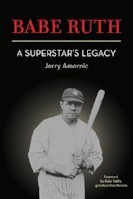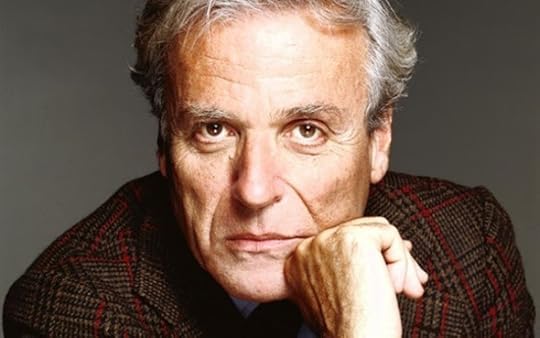Kenneth Atchity's Blog, page 107
November 24, 2018
Guest Post: Ignorance isn’t bliss by Jerry Amernic
 Four years ago I visited a major Canadian university and asked students questions about World War II. FDR? Never heard of him. Churchill? There’s a statue of him but I don’t know what he did. The Allies? Can’t tell you who they were. D-Day and the Beaches of Normandy?
Four years ago I visited a major Canadian university and asked students questions about World War II. FDR? Never heard of him. Churchill? There’s a statue of him but I don’t know what he did. The Allies? Can’t tell you who they were. D-Day and the Beaches of Normandy?Nope.
It wound up in a video which has been downloaded 90,000 times.
This November 11th marks 100 years since the end of World War I, also known as the Great War and the War to End All Wars. Only it didn’t. One century later and almost three-quarters of a century after the end of World War II, where are we?
The most powerful nation on earth is led by an ignorant demagogue who has no respect for democracy or freedom, and tens of millions support him through thick and thin, thinking he’s a Messiah who will take them to the Promised Land. Right-wing political parties are gaining ground and it’s okay to be a white supremacist or neo-Nazi as long as you call yourself the Alt Right.
But it’s not okay.
When I was a reporter I once covered a reunion of Belgian citizens who had been liberated by Canadian soldiers in 1944, and they were meeting with some of those soldiers thirty years hence. All these people were much older, but the emotion and camaraderie at that thing was so palpable I can still feel it in my bones.
Those Belgians hadn’t forgotten what it was like to be occupied by Nazi Germany, and to this day Belgium continues to honour the Canadians who liberated the nation.
Years after that reunion I was a guest of the Canadian Armed Forces, doing talks at military bases in the former West Germany. We had a German chauffeur, Herbie, a man in his 50s. We had stopped at a traffic light in this charming little town in the Black Forest when a group of straggly, long-haired youths walked across the road.
“You know,” Herbie said, “Hitler did a lot of bad things but he wouldn’t put up with that.”
I often discuss the issue about our young knowing nothing about history. They know nothing because that is what the schools teach them.
Last week I read an op-ed by an immigrant to the West who doesn’t think we should wear poppies at Remembrance Day because, he said, we shouldn’t recognize militarism. So here’s what I think.
If you’re new to a country that still relishes the principle of liberal democracy and don’t think we should observe such things, kindly pack your bags and return to where you came from.
If you’re a young person, a Millennial or a schoolteacher who doesn’t see the need to know about the last century, tune into the recent Munk Debate in Toronto about the rise of populism between former Trump aide Steve Bannon and journalist David Frum. It’s online.
Frum, senior editor of The Atlantic, delivered a passionate and eloquent defense of liberal democracy. But to fully appreciate what he said it would help to know about the past.
Ignorance might get elected, but it is not bliss.

CLICK IMAGE TO PURCHASE – BABE RUTH - A Superstar's Legacy.
Jerry Amernic is a Canadian writer of fiction and non-fiction books. He is the author of his newest book BABE RUTH - A Superstar's Legacy.
New Website
www.jerrythenovelist.com

Published on November 24, 2018 00:00
November 22, 2018
Happy Thanksgiving
Published on November 22, 2018 00:00
November 20, 2018
November 19, 2018
Alan Gibson celebrates the launch of his new thriller, High Voltage, at a party and book signing on December 8th!
Alan Gibson celebrates the launch of his new thriller, High Voltage, at a party and book signing on December 8th! Join me Saturday, December 8th at 5 pm at Four Seasons Books to get your signed copy.
About High Voltage: What seems like one lucky day quickly triggers a series of unimaginable horrors for Strider, an unassuming hiker fresh off the Appalachian Trail. In his panicked search for his missing fiancee, he finds himself trapped at Winter's Farm, a popular hiker destination with a kooky owner and mysterious disappearances. But a foreboding electric fence stymies his desperate escape.
Hope to see you there,
Alan B. Gibson
abgibson.me

Photo: WV Observer


Published on November 19, 2018 15:37
November 18, 2018
Author Dennis Palumbo & "Head Wounds" on Authors on the Air
Authors on the Air host Pam Stack welcomes author Dennis Palumbo.
Dennis Palumbo, M.A., MFT is a writer and licensed psychotherapist in private practice, specializing in creative issues. His newest crime novel, PHANTOM LIMB, is on sale now from Poisoned Pen Press. The book is the fourth in the series featuring psychologist and trauma expert Daniel Rinaldi.The first Rinaldi mystery was MIRROR IMAGE, to be followed by FEVER DREAM and NIGHT TERRORS. Palumbo is also the author of WRITING FROM THE INSIDE OUT (John Wiley), as well as a collection of mystery short stories, FROM CRIME TO CRIME (Tallfellow Press). He also blogs regularly for the Huffington Post, and writes the popular “Hollywood on the Couch” column for the PSYCHOLOGY TODAY website.Formerly a Hollywood screenwriter, Palumbo’s credits include the feature film My Favorite Year, for which he was nominated for a WGA Award for Best Screenplay. He was also a staff writer for the ABC-TV series Welcome Back, Kotter, and has written numerous series episodes and pilots.This is a copyrighted podcast owned by the Authors on the Air Global Radio Network. http://authorsontheair.com. Host Pam Stack is the executive producer of the network who reads 400 books a year and is an internationally awarded advocate for women and girls. http://facebook.com/authorsontheair. This broadcast is sponsored by the Authors on the Air Press, presenting BETRAYED: Powerful Stories of Kick-Ass Crime Survivors (benefiting the Naples Shelter for Abused Women and Children). https://amzn.to/2GDY4KQ
Dennis Palumbo, M.A., MFT is a writer and licensed psychotherapist in private practice, specializing in creative issues. His newest crime novel, PHANTOM LIMB, is on sale now from Poisoned Pen Press. The book is the fourth in the series featuring psychologist and trauma expert Daniel Rinaldi.The first Rinaldi mystery was MIRROR IMAGE, to be followed by FEVER DREAM and NIGHT TERRORS. Palumbo is also the author of WRITING FROM THE INSIDE OUT (John Wiley), as well as a collection of mystery short stories, FROM CRIME TO CRIME (Tallfellow Press). He also blogs regularly for the Huffington Post, and writes the popular “Hollywood on the Couch” column for the PSYCHOLOGY TODAY website.Formerly a Hollywood screenwriter, Palumbo’s credits include the feature film My Favorite Year, for which he was nominated for a WGA Award for Best Screenplay. He was also a staff writer for the ABC-TV series Welcome Back, Kotter, and has written numerous series episodes and pilots.This is a copyrighted podcast owned by the Authors on the Air Global Radio Network. http://authorsontheair.com. Host Pam Stack is the executive producer of the network who reads 400 books a year and is an internationally awarded advocate for women and girls. http://facebook.com/authorsontheair. This broadcast is sponsored by the Authors on the Air Press, presenting BETRAYED: Powerful Stories of Kick-Ass Crime Survivors (benefiting the Naples Shelter for Abused Women and Children). https://amzn.to/2GDY4KQ

Published on November 18, 2018 00:00
November 16, 2018
R.I.P. William Goldman

“Nobody knows anything...... Not one person in the entire motion picture field knows for a certainty what's going to work. Every time out it's a guess and, if you're lucky, an educated one.”
― William Goldman, Adventures in the Screen Trade

Published on November 16, 2018 08:57
November 15, 2018
Who are the best literary agents in Manhattan?
Published on November 15, 2018 00:00
November 13, 2018
IDEAMENSCH, IN INTERVIEW: Kenneth Atchity Founder of Story Merchant
"Never cease to communicate what you do and how much you love it."
Dr. Ken Atchity (Yale PhD) resigned his tenured position as professor of comparative literature to pursue the least secure profession imaginable: that of a literary manager-producer—a story merchant. Since then he’s founded five companies, develops, sells, and publishes books and produces movies (30+ to date). Meanwhile he’s written over twenty books, fiction and nonfiction, of his own and set up nearly 20 New York Times bestsellers for clients. His most recent released film was The Meg, which has earned over half a billion dollars worldwide. It only took 22 years to get to the screen!Where did the idea for your company come from?I named my umbrella company Story Merchant to honor my ancestors, the ancient Phoenicians, traders extraordinaire, who invented the alphabet to facilitate their trade in stories from India to Egypt, from Gibraltar to the Middle East. This is why we find the same scenes in the Odyssey as in the Ramayana—where Odysseus or Rama strings a bow and shoots an arrow through 12 axes! An ambassador from Yemen once called me a story merchant, and explained the history to me. On our logo, the two symbols are the first and last letters of the Phoenician alphabet.What does your typical day look like and how do you make it productive?Born on a farm, I love waking up well before the sun. I read for an hour with my coffee, then work on my various writing projects—novels, nonfiction, and scripts—for two hours and then go to tennis or the gym at 8. When I return around 10, I handle the dozens of projects I’m managing or producing using a “rotation” method based on my attention span for each project and their priorities.How do you bring ideas to life?It’s a simple formula, really: vision + persistence. Neither without the other.What’s one trend that excites you?The proliferation of channels demanding stories for insatiable audiences continues to excite me.What is one habit of yours that makes you more productive as an entrepreneur?Figuring out my attention span for each activity I engage in, and being careful not to exceed it.What advice would you give your younger self?I’d say, “Younger Self, start doing what you love even younger than you did. And I started doing that when I was about 10.”Tell us something that’s true that almost nobody agrees with you on.1. Everything is predictable in retrospect.
2. You always find out everything if you wait long enough.
3. I’m such a hard coach that clients sometimes leave me; but they nearly always come back.As an entrepreneur, what is the one thing you do over and over and recommend everyone else do?Never cease to communicate what you do and how much you love it.What is one strategy that has helped you grow your business?Figuring out what writers need, and providing a service to provide it. That’s why there are several “Story Merchant Companies”—The Writers Lifeline, for editing and ghostwriting; Story Merchant, for coaching and representation; Story Merchant Books for publishing; and Atchity Productions, for producing stories we’ve developed through one or another of the companies.What is one failure you had as an entrepreneur, and how did you overcome it?Impatience is a failure in the creative business. You overcome it with patience. I always said, “Patience is my middle name,” but now I say, “it’s also my first name and my last name.””What is one business idea that you’re willing to give away to our readers?Somebody should start a business just recording stories on video–a kind of WIKIPEDIA for stories.What is the best $100 you recently spent? What and why?I travel a lot, and the best $100 I’ve spent in a long while was to get a Global Pass to avoid the long reentry custom lines.What is one piece of software or a web service that helps you be productive? How do you use it?I’m in love with my ACT database.I keep absolutely everything in it; emails, telephone conversations, reminders about things that entry might be interested in.What is the one book that you recommend our community should read and why?Read my Quit Your Dayjob and Lead the Life of Your Dreams, to shorten the time between doing what you have to do and doing only what you want to do.What is your favorite quote?The universe is made of stories, not of atoms.—Muriel RukmeyerKey learnings:Vision is insufficient to accomplish dreams; you need vision + persistence.Attention span is a variable, varying from activity to activity. The key to productivity is figuring out your attention span for each activity, and sticking to it.Replace your impatience with patience.Work is the solution for 99% of your problems, financial, emotional, psychological and otherwise. As Ray Bradbury advised, “Start doing more. It’ll get rid of all those moods you’ve been having.”

Published on November 13, 2018 00:00
November 11, 2018
What Types of $3M – $10M Films Break Out?
An investigative report from Film Industry Analyst Stephen Follows and Founder of The Numbers Bruce Nash
In recent articles, we’ve looked at what it takes for films to break out at different ends of the indie budget spectrum. We’ve looked at low-budget films (with budgets under $3 million), those costing $10 million and $20 million, and also movies made for between $20 million to $50 million. Now we will fill in the gap by looking at films budgeted between $3 million and $10 million.
This budget range makes up an important part of the independent film landscape. The budget is high enough to support hiring well-known actors and actresses, or to spend more on the “polish” of the film through (for example) acquiring rights to well-known music, building more elaborate sets, or filming in remote locations.
However, the budgets are also low enough that every penny has to be spent wisely for the investment to show up on the screen. The group of films that broke out at this budget level include some of the best indie films of the century so far, several of which earned Oscar glory.
Model One: Character Study Dramas
Almost 60% of the most profitable films budgeted between $3 million and $10 million are dramas that give an insight into the minds of interesting characters.
The majority of these films are dark in tone, complex in their plotting and eschew the traditional happy ending. However, this category is not completely devoid of sunshine – some films are uplifting despite their dark settings (such as Billy Elliot) and a handful are genuinely cheerful (such as Bend It Like Beckham). Many of them feature well-established actors or actresses who were drawn to the opportunity to stretch their skills on camera (and maybe snag an Oscar nomination).
All of these films have been well reviewed, with an average Metascore of 77 out of 100, and an average audience rating of 7.7 on IMDb.

Model Two: High-Concept Horror
In a previous study, we found that horror films made up a large percentage of the most profitable films budgeted under $3 million, so it’s no surprise to see them also appearing on today’s list.
All have a very clear, simple premise that promises a dark, scary movie. Well, all except Shaun of the Dead, perhaps.
Model Three: Breakout Documentaries
Only three documentaries make our list, partly because not many documentaries cost over $3 million to make. These three films share two characteristics: they cost quite a lot to make by documentary standards, and they became cultural phenomena.
Excluding some long-running IMAX films, Fahrenheit 9/11 and March of the Penguins are the two highest-grossing documentaries of all time in the US, and the second- and third-highest grossing documentaries worldwide (after Michael Jackson’s This Is It).
Model Four: Crowd Pleasers
The final collection is that of movies which promise to deliver a fun time for a very specific audience.
These movies are likely to be best enjoyed with a group of friends or family who can directly relate to the characters on-screen. Note that the key element with all of these films is that the filmmakers knew exactly who they were making the film for. But also note that there’s virtually no overlap between the audiences for these films—this isn’t a case of finding the right genre, it’s a case of understanding exactly what your audience will like, and making a film to fit. At this budget range, that can be enough to make a very profitable film.
AnalysisToday’s budget range has the highest percentage of films that stray outside the mainstream. 35% were not produced in the United States, compared to just 5% of the most profitable films made on between $20 million and $50 million. In addtion, these films are also much darker in tone than the most profitable films in other budget ranges. This is best illustrated by the MPAA rating, with 67% receiving an R rating.

We’ve now run analyses of indie films budgeted all the way from $500,000 up to $50 million. In each budget range, we’ve found interesting groups of films that seem to work well at that specific budget range: faith-based films at very low budgets, age-reversal family comedies at the high-budget range, music-based films at the higher mid-budget range, and now niche crowd-pleasers at the lower mid-budget range. There are also a couple of types of movie that can break out at any budget level: very high-quality dramas and (at least up to about a $20 million budget) horror films.
Taken as a whole, we think the analysis reveals two important lessons for the independent film-maker:
First, think about your budget in terms of the audience you’re trying to reach, and make sure that you focus on that audience when making the film. Studios spending $200 million plus to make and market a film need to worry about reaching all four “quadrants.” But the films that we have seen breaking out have almost all worked by their appeal to a specific audience.
Second, with few exceptions, quality counts. As budgets increase, we’ve seen more well-known actors and actresses starring in the films, but, in the main, the talent has been drawn to the quality of the film or the chance to do something new. Getting a great story and a great script is the first important step to creating financial movie magic.
NotesIn order to conduct this study, we began with a list of over 3,000 films from The Numbers’ financial database, investigating full financial details, including North American (i.e. “domestic”) and international box office, video sales and rentals, TV and ancillary revenue. We narrowed our focus to study feature films released between 2000 and 2016 and budgeted between $3 million and $10 million. Finally, we calculated the likely profit margin for the producers, after all revenue and expenses were taken into account.The financial figures come from a variety of sources, including people directly connected to the films, verified third-party data and computation models based on partial data and industry norms. It is possible that one or two of the individual figures are different to our predictions, though en masse we are confident of the larger picture.Sequels were excluded as their success could be attributed to their existing audience. This affected Saw II, Saw III, Saw IV, Paranormal Activity 3, Paranormal Activity 4, Insidious Chapter 2, High School Musical 2 and Clerks 2.
About the AuthorsStephen Follows is a writer, producer and film industry analyst. His film research has been featured in the New York Times, The Times, The Telegraph, The Guardian, The Daily Mail, The Mirror, The Evening Standard, Newsweek, The New Statesman, AV Club and Indiewire. He acted as an industry consultant and guest on the BBC Radio 4 series The Business of Film, which topped the iTunes podcast chart, and has consulted for a wide variety of clients, including the Smithsonian in Washington. In addition to film analytics, Stephen is an award-winning writer-producer and runs a production company based in Ealing Studios, London.
Bruce Nash is the founder and President of Nash Information Services, LLC, the premier provider of movie industry data and research services and operator of The Numbers, a website that provides box office and video sales tracking, and daily industry news. Mr. Nash founded the company in 1997 and it now serves approximately 1,000 clients, from the major studios to first-time independent filmmakers. Mr. Nash provides regular commentary and analysis for media outlets, including the L.A. Times, the New York Times, Variety, the Wall Street Journal, 60 Minutes, and CBS News. Mr. Nash is the official adjudicator of movie records for the Guinness Book of Records. To learn more about his company’s services, visit Nash Information Services.
Copyright © 2017 Stephen Follows and Bruce Nash. All rights reserved. Reproduced with permission.

In recent articles, we’ve looked at what it takes for films to break out at different ends of the indie budget spectrum. We’ve looked at low-budget films (with budgets under $3 million), those costing $10 million and $20 million, and also movies made for between $20 million to $50 million. Now we will fill in the gap by looking at films budgeted between $3 million and $10 million.
This budget range makes up an important part of the independent film landscape. The budget is high enough to support hiring well-known actors and actresses, or to spend more on the “polish” of the film through (for example) acquiring rights to well-known music, building more elaborate sets, or filming in remote locations.
However, the budgets are also low enough that every penny has to be spent wisely for the investment to show up on the screen. The group of films that broke out at this budget level include some of the best indie films of the century so far, several of which earned Oscar glory.
Model One: Character Study Dramas

Almost 60% of the most profitable films budgeted between $3 million and $10 million are dramas that give an insight into the minds of interesting characters.
The majority of these films are dark in tone, complex in their plotting and eschew the traditional happy ending. However, this category is not completely devoid of sunshine – some films are uplifting despite their dark settings (such as Billy Elliot) and a handful are genuinely cheerful (such as Bend It Like Beckham). Many of them feature well-established actors or actresses who were drawn to the opportunity to stretch their skills on camera (and maybe snag an Oscar nomination).
All of these films have been well reviewed, with an average Metascore of 77 out of 100, and an average audience rating of 7.7 on IMDb.

Model Two: High-Concept Horror

In a previous study, we found that horror films made up a large percentage of the most profitable films budgeted under $3 million, so it’s no surprise to see them also appearing on today’s list.
All have a very clear, simple premise that promises a dark, scary movie. Well, all except Shaun of the Dead, perhaps.
Model Three: Breakout Documentaries

Only three documentaries make our list, partly because not many documentaries cost over $3 million to make. These three films share two characteristics: they cost quite a lot to make by documentary standards, and they became cultural phenomena.
Excluding some long-running IMAX films, Fahrenheit 9/11 and March of the Penguins are the two highest-grossing documentaries of all time in the US, and the second- and third-highest grossing documentaries worldwide (after Michael Jackson’s This Is It).
Model Four: Crowd Pleasers

The final collection is that of movies which promise to deliver a fun time for a very specific audience.
These movies are likely to be best enjoyed with a group of friends or family who can directly relate to the characters on-screen. Note that the key element with all of these films is that the filmmakers knew exactly who they were making the film for. But also note that there’s virtually no overlap between the audiences for these films—this isn’t a case of finding the right genre, it’s a case of understanding exactly what your audience will like, and making a film to fit. At this budget range, that can be enough to make a very profitable film.
AnalysisToday’s budget range has the highest percentage of films that stray outside the mainstream. 35% were not produced in the United States, compared to just 5% of the most profitable films made on between $20 million and $50 million. In addtion, these films are also much darker in tone than the most profitable films in other budget ranges. This is best illustrated by the MPAA rating, with 67% receiving an R rating.

We’ve now run analyses of indie films budgeted all the way from $500,000 up to $50 million. In each budget range, we’ve found interesting groups of films that seem to work well at that specific budget range: faith-based films at very low budgets, age-reversal family comedies at the high-budget range, music-based films at the higher mid-budget range, and now niche crowd-pleasers at the lower mid-budget range. There are also a couple of types of movie that can break out at any budget level: very high-quality dramas and (at least up to about a $20 million budget) horror films.
Taken as a whole, we think the analysis reveals two important lessons for the independent film-maker:
First, think about your budget in terms of the audience you’re trying to reach, and make sure that you focus on that audience when making the film. Studios spending $200 million plus to make and market a film need to worry about reaching all four “quadrants.” But the films that we have seen breaking out have almost all worked by their appeal to a specific audience.
Second, with few exceptions, quality counts. As budgets increase, we’ve seen more well-known actors and actresses starring in the films, but, in the main, the talent has been drawn to the quality of the film or the chance to do something new. Getting a great story and a great script is the first important step to creating financial movie magic.
NotesIn order to conduct this study, we began with a list of over 3,000 films from The Numbers’ financial database, investigating full financial details, including North American (i.e. “domestic”) and international box office, video sales and rentals, TV and ancillary revenue. We narrowed our focus to study feature films released between 2000 and 2016 and budgeted between $3 million and $10 million. Finally, we calculated the likely profit margin for the producers, after all revenue and expenses were taken into account.The financial figures come from a variety of sources, including people directly connected to the films, verified third-party data and computation models based on partial data and industry norms. It is possible that one or two of the individual figures are different to our predictions, though en masse we are confident of the larger picture.Sequels were excluded as their success could be attributed to their existing audience. This affected Saw II, Saw III, Saw IV, Paranormal Activity 3, Paranormal Activity 4, Insidious Chapter 2, High School Musical 2 and Clerks 2.
About the AuthorsStephen Follows is a writer, producer and film industry analyst. His film research has been featured in the New York Times, The Times, The Telegraph, The Guardian, The Daily Mail, The Mirror, The Evening Standard, Newsweek, The New Statesman, AV Club and Indiewire. He acted as an industry consultant and guest on the BBC Radio 4 series The Business of Film, which topped the iTunes podcast chart, and has consulted for a wide variety of clients, including the Smithsonian in Washington. In addition to film analytics, Stephen is an award-winning writer-producer and runs a production company based in Ealing Studios, London.
Bruce Nash is the founder and President of Nash Information Services, LLC, the premier provider of movie industry data and research services and operator of The Numbers, a website that provides box office and video sales tracking, and daily industry news. Mr. Nash founded the company in 1997 and it now serves approximately 1,000 clients, from the major studios to first-time independent filmmakers. Mr. Nash provides regular commentary and analysis for media outlets, including the L.A. Times, the New York Times, Variety, the Wall Street Journal, 60 Minutes, and CBS News. Mr. Nash is the official adjudicator of movie records for the Guinness Book of Records. To learn more about his company’s services, visit Nash Information Services.
Copyright © 2017 Stephen Follows and Bruce Nash. All rights reserved. Reproduced with permission.

Published on November 11, 2018 00:00
November 10, 2018
Tell Your Story to The World and Sell It For Millions!
Published on November 10, 2018 00:00









